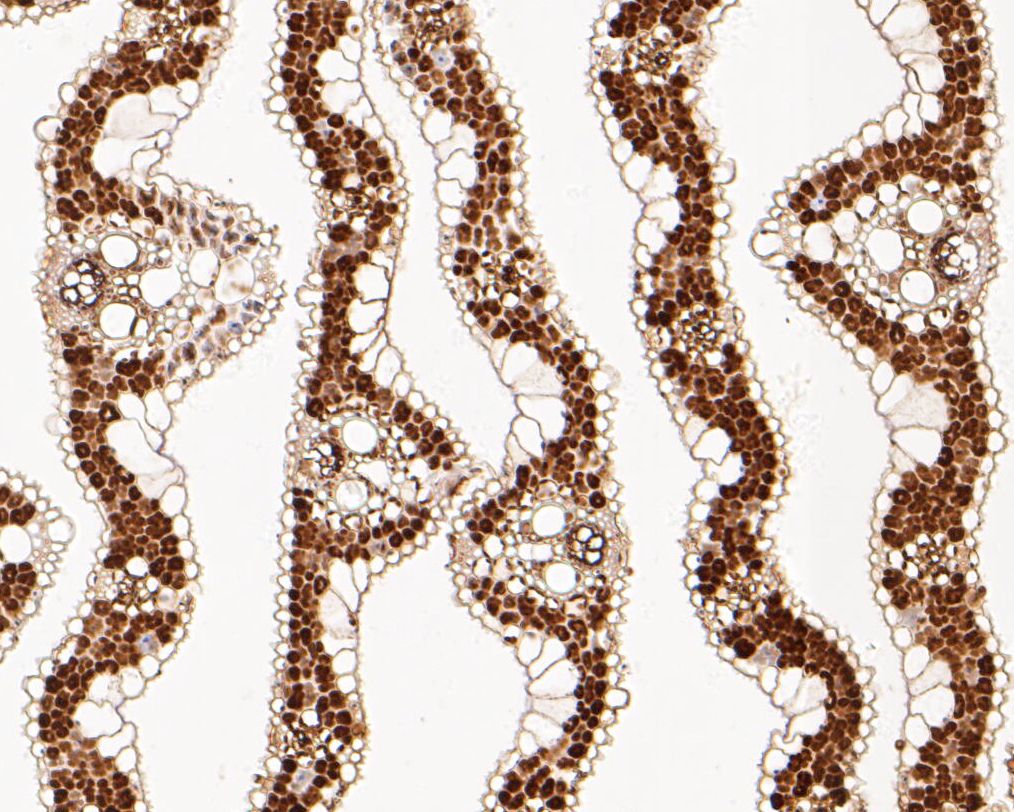-
Product Name
Anti-LOC4344396 antibody
- Documents
-
Description
Rabbit polyclonal antibody to LOC4344396
-
Tested applications
WB, IHC-P
-
Species reactivity
Rice
-
Alternative names
MTR1 antibody
-
Isotype
Rabbit IgG
-
Preparation
This antigen of this antibody was synthetic peptide within arogenate dehydratase aa 46-59.
-
Clonality
Polyclonal
-
Formulation
Liquid, 1*PBS (pH7.4), 0.2% BSA, 50% Glycerol. Preservative: 0.05% Sodium Azide.
-
Storage instructions
Store at +4℃ after thawing. Aliquot store at -20℃. Avoid repeated freeze / thaw cycles.
-
Applications
WB: 1:100-1:500
IHC-P: 1:50-1:200
-
Validations

Fig1: Western blot analysis of Arogenate dehydratase on rice tissue lysates. Proteins were transferred to a PVDF membrane and blocked with 5% BSA in PBS for 1 hour at room temperature. The primary antibody ( 1/100) was used in 5% BSA at room temperature for 2 hours. Goat Anti-Rabbit IgG - HRP Secondary Antibody (HA1001) at 1:5,000 dilution was used for 1 hour at room temperature.

Fig2: Immunohistochemical analysis of paraffin-embedded rice tissue using anti-Arogenate dehydratase antibody. The section was pre-treated using heat mediated antigen retrieval with Tris-EDTA buffer (pH 8.0-8.4) for 20 minutes.The tissues were blocked in 5% BSA for 30 minutes at room temperature, washed with ddH2O and PBS, and then probed with the primary antibody ( 1/50) for 30 minutes at room temperature. The detection was performed using an HRP conjugated compact polymer system. DAB was used as the chromogen. Tissues were counterstained with hematoxylin and mounted with DPX.
- Background
-
References
- Cho, Man-Ho; Corea, Oliver R. A.; Yang, Hong; Bedgar, Diana L.; Laskar, Dhrubojyoti D.; Anterola, Aldwin M.; et al. (2007). Phenylalanine biosynthesis in Arabidopsis thaliana-- identification and characterization of arogenate dehydratases. J. Biol. Chem. 282 (42): 30827–35.
- Maeda, H.; Shasany, A. K.; Schnepp, J.; Orlova, I.; Taguchi, G.; Cooper, B. R.; et al. (2010). RNAi suppression of Arogenate Dehydratase 1 reveals that phenylalanine is synthesized predominantly via the arogenate pathway in petunia petals. Plant Cell. 22 (3): 832–849.
Related Products / Services
Please note: All products are "FOR RESEARCH USE ONLY AND ARE NOT INTENDED FOR DIAGNOSTIC OR THERAPEUTIC USE"
